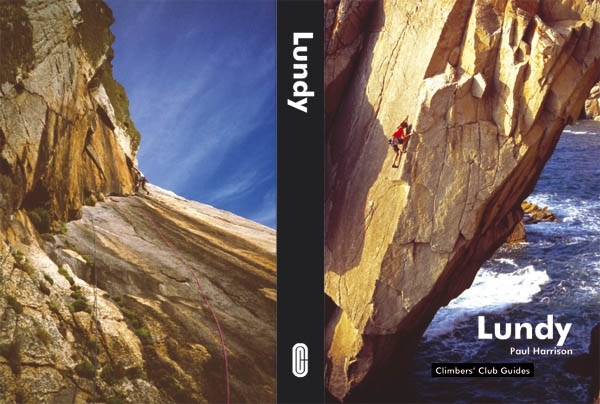Climbing On Lundy - Climbers Club
8th Sep 2011
Having climbed on the magical Isle of Lundy, in the Bristol Channel, three times before (in 1993, 1994 and 2003) I was excited about a my fourth trip with a group of friends in August this year. For some it was their fist visit, for others their eighth. Some were intending to explore the less frequented areas, whilst others would be seeking out the super classics, so I felt that we should offer a stern yet fair, and varied test for the new guide, published in 2008.
Since my previous visit to Lundy, the standard of guidebook writing within the British Isles has improved dramatically, with a few of the regular publishers significantly upping their game, so it is with some relief when I say that – through the latest Lundy guide - the Climbers’ Club Guides have done their best to keep up, also moving with the times. With over 200 routes added to the island since the publication of the previous guide in 1994, this guide was a welcome edition.
First impressions are everything, and the front cover photo, Neil Dickson on The Cullinan, is a lovely shot which illustrates some of the reasons why Lundy has lured so many adventurous climbers to its shores.
In order for the countless inevitable errors - which still occur in some guidebooks today - to be ironed out and omitted, a passion – some might say and obsession – with the area concerned is a must. The author, Paul Harrison has arguably been Lundy’s greatest admirer, most frequented visitor and is therefore the strongest ambassador for climbing on the island. Likewise, the two other major contributors Simon Cardy (predominantly with maps and photos), and more recently Neil Dickson (Chronology) have shown unsurpassed passion for the climbing on Lundy.
Cardy’s boundless enthusiasm to walk the length of the island in order to capture the daily magic over recent summer/autumn seasons has produced an array of spectacular photos, many of which show the leading protagonists over the past decade, as well as some actual first ascent shots from many impressive feats. A slight criticism is the fact that the majority of the older ‘classic historical’ shots have been shifted to the rear of the book, squashed somewhat into the pages of the Chronology.
The maps, combined with the colour photo topos are a huge improvement, making the complex task of finding zawns and routes that bit easier. However, we did notice a few instances where some changes had been made from the previous edition, which lead to the opposite being the case; for example, the removal of the topo for Pat Littlejohn’s Extreme Rock test piece from 1974, ‘The Promised Land’.
The addition of a Deep Water soloing section is a welcome one although, as yet, it remains the preserve of the ‘keener’ activist, with most routes erring on the adventurous side of the scale; in true keeping with the general feel of Lundy climbing.
The chronological historical section, compiled by Neil Dickson, which has been added to the first ascent history section at the back of the book, provides an interesting read, as well as building an appetite for a forthcoming trip to the island.
In summary, it’s a great guide, which has been produced by climbers with a passion and knowledge to Lundy, which is second to none. If you are heading to Lundy and you don’t already have a guidebook, then you don’t really have many options other to buy this guide. However, even if there were other options, it is likely that this would be better!
At £19.50 it’s not cheap but it seems to be the going rate these days, so it represents decent value for money when compared to some other guides available.

